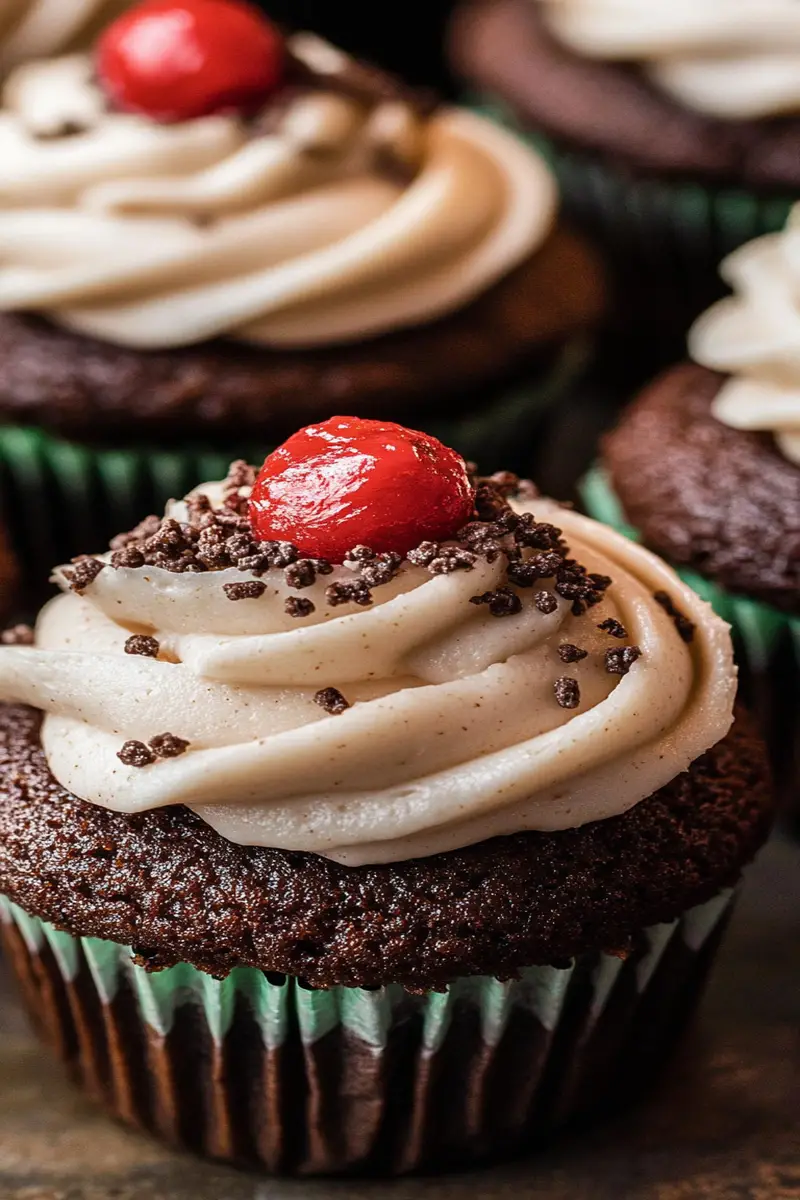Introduction and Quick Summary
Buttercream icing for cupcakes is a classic favorite among bakers and dessert lovers alike. This icing not only tastes delightful but also adds an aesthetically pleasing touch to your baked creations. Whether you’re preparing a batch of cupcakes for a birthday party, a wedding celebration, or simply to satisfy your sweet tooth, mastering this versatile icing is essential. In this article, we will guide you through the process of creating smooth and creamy buttercream that holds its shape beautifully on top of any cupcake.
The beauty of buttercream icing lies in its simplicity and adaptability. You can flavor it with different extracts or even incorporate various colors to match your theme. With our detailed recipe and instructions, you’ll learn how to achieve the perfect consistency for piping decorations or spreading it on your treats. From rich chocolate flavors to light vanilla notes, you can customize this icing easily.
Get ready to impress your friends and family with your baking skills! By the end of this article, you’ll have all the knowledge you need to whip up delicious buttercream icing that elevates your cupcakes from ordinary to extraordinary. Let’s dive into the essentials of creating this delightful frosting!
Main Ingredients
Unsalted Butter
Unsalted butter is the star ingredient in any good buttercream icing recipe. It serves as the base that provides richness and creaminess. Use high-quality unsalted butter at room temperature for optimal results; this helps create a smooth texture when whipped. Typically, 1 cup (or 2 sticks) is sufficient for making enough icing to frost 12 cupcakes. Avoid using margarine as it can lead to a less desirable texture and flavor in your final product.
Powdered Sugar
Powdered sugar (also known as confectioners’ sugar) is crucial for achieving that sweet taste characteristic of buttercream icing. It dissolves easily into the creamed butter and contributes to the smooth consistency we aim for in our frosting. For a standard recipe, you will need about 4 cups of powdered sugar. Sifting it before adding helps eliminate any lumps and ensures a silky-smooth finish in your icing.
Heavy Cream
Heavy cream plays an important role in creating a light and fluffy texture in your buttercream icing. Adding just a few tablespoons can help thin out the mixture while maintaining a rich consistency. Aim to use around 2-4 tablespoons depending on how stiff or spreadable you want your icing to be. For best results, choose heavy cream with at least 36% fat content so that it whips well into your mixture.
Vanilla Extract
Vanilla extract adds depth of flavor that complements the sweetness of the sugar and richness of the butter in your frosting. A teaspoon is usually enough to enhance the overall taste without overpowering other flavors you might want to add later on. Always opt for pure vanilla extract instead of imitation varieties; it makes a noticeable difference in both taste and aroma.
Food Coloring (Optional)
Food coloring allows you to personalize your buttercream icing further by adding vibrant hues that match any occasion or theme. Gel food coloring is often preferred over liquid versions because it doesn’t alter the consistency of your icing as much. Just a few drops can transform plain white frosting into colorful accents atop your beautifully baked cupcakes.

How to Prepare Buttercream Icing for Cupcakes
Step 1: Whip the Butter
Start by placing your room-temperature unsalted butter into a mixing bowl. Using an electric mixer fitted with paddle attachments or a hand mixer on medium speed, whip the butter until it becomes light and fluffy—this should take about 3-5 minutes. The goal here is to incorporate air into the mixture so that it has a nice volume when combined with other ingredients.
Make sure there are no lumps left behind; smoothness is key! If necessary, scrape down the sides of your bowl periodically with a spatula to ensure all pieces are mixed evenly together.
Step 2: Gradually Add Powdered Sugar
Next comes adding powdered sugar gradually—start with about half of what you measured out (around 2 cups). Mix at low speed until combined before increasing speed slightly once most sugar is incorporated into the butter mixture.
Continue adding more powdered sugar until you’ve used all four cups; mixing well after each addition helps avoid clouds of dust from flying everywhere! This gradual approach prevents clumping while ensuring uniform distribution throughout every bite.
Step 3: Mix in Heavy Cream and Flavoring
Now it’s time to mix in heavy cream along with vanilla extract if using it! Pour about two tablespoons directly into your frosting mixture while beating at medium-high speed once again until everything combines smoothly.
The amount of heavy cream needed may vary based on how stiff you’d like your frosting—if it’s too thick after mixing everything together, add another tablespoon until desired consistency is reached!
Taste test at this stage as well—adjust sweetness by either adding more powdered sugar or flavoring if necessary! Keep whipping until you achieve that perfect velvety softness ideal for spreading or piping onto those lovely cupcakes waiting nearby!
Step 4: Color Your Icing (Optional)
If you’d like colored frosting now’s an excellent moment! Take some gel food coloring (a little goes far!) & fold gently into whipped frosting using spatula—don’t overmix since we want those beautiful swirls visible throughout each dollop applied later!
You can separate portions beforehand too if planning on multiple colors—just remember they’ll blend together when applied so keep designs simple yet fun! Once satisfied with colors achieved let rest while preparing cupcakes readying them up next!
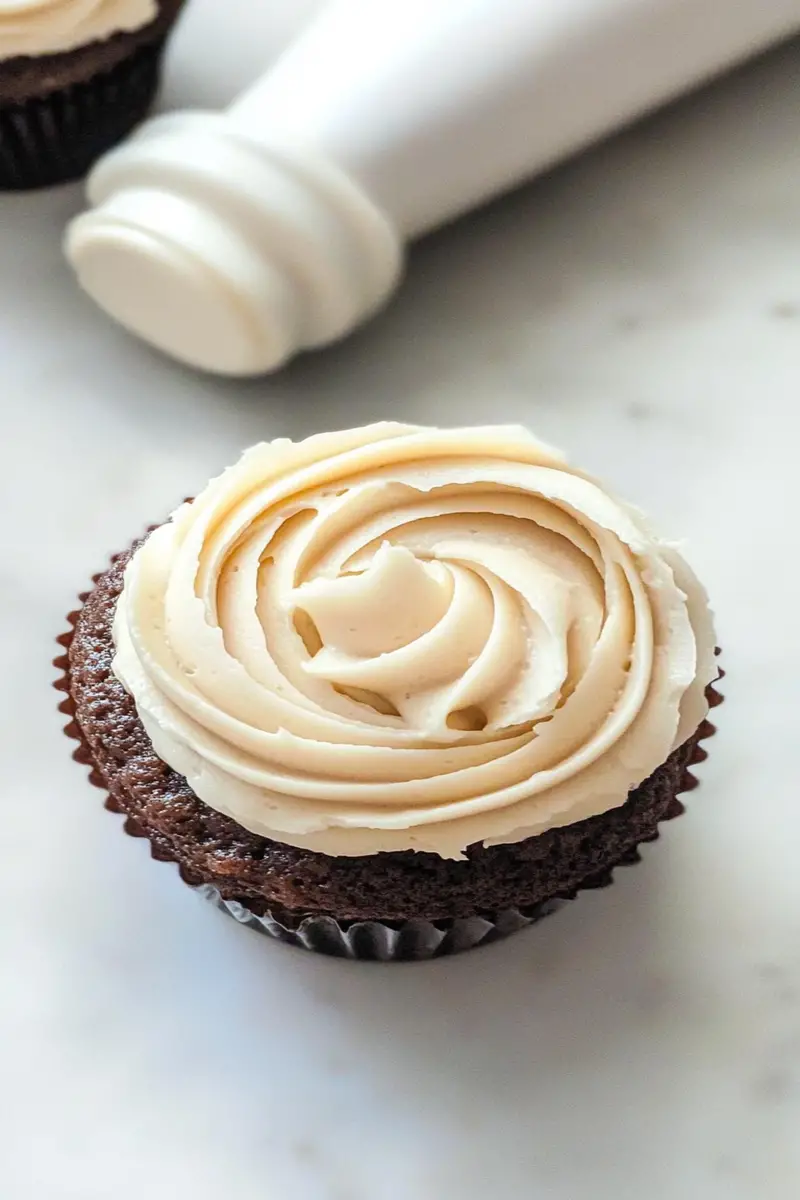
Serving and Storing Tips
Serving Suggestions
When serving cupcakes adorned with delicious buttercream icing consider presentation alongside flavors available! Pair classic vanilla or chocolate bases topped off nicely either way makes every bite memorable guests won’t forget anytime soon!
For special occasions like birthdays parties consider varying sizes shapes even colors complementing themes celebrations perfectly matching moods atmosphere created around them—think sprinkles edible glitter additional toppings enhancing visual appeal further!
Always serve freshly iced creations within reasonable timeframe after decorating since humidity/warmth affects integrity keeping things looking pristine longer helps maintain quality taste enjoyed fully by everyone indulging!
Storing Leftover Icing
If there’s leftover iced goodness don’t fret! Store any remaining unused portions inside airtight container refrigerate up until week maximum allowing flavors meld even more beautifully while chilling ensures freshness preserved nicely too!
Before using refrigerated leftovers allow them warm slightly back room temp before whisking again restore fluffiness regain earlier delightful texture lost overnight coolness allows easier spreading piping later whenever needed next time around!
Never freeze finished products though instead keep extra plain uncolored batches frozen storing separate containers great way save space utilize whenever required future cupcake endeavors exciting new creations awaiting discovery always right corner pantry waiting patiently yours enjoy soon enough!
With these tips at hand making great tasting buttery frostings becomes second nature over time effortlessly transforming simple desserts extraordinary delight every occasion celebrated joyfully shared loved ones alike!
Mistakes to avoid
One common mistake when making buttercream icing for cupcakes is not using room temperature ingredients. Cold butter or cream cheese can lead to a lumpy texture in your icing, making it difficult to achieve that smooth finish. To avoid this, take your butter and any other cold ingredients out of the refrigerator at least 30 minutes before you start. This will allow them to soften, enabling you to whip up a creamy and fluffy consistency.
Another frequent error is overmixing the buttercream. While it’s important to beat the ingredients well, overmixing can introduce too much air into the icing. This may result in a light and airy texture but can cause your icing to lose its stability and spreadability. Aim to mix just until all ingredients are combined and the icing is smooth, typically around 2-3 minutes on medium speed.
Using too much sugar is another pitfall. While granulated sugar gives sweetness, too much can make your buttercream overly sweet and grainy. Instead of piling on additional sugar, consider adding flavor extracts like vanilla or almond to enhance the taste without increasing sweetness significantly. A good ratio generally ranges from 2: 1 butter to sugar, which keeps sweetness balanced.
Not incorporating flavor elements properly also detracts from the overall experience of your buttercream icing for cupcakes. Whether you’re adding cocoa powder for chocolate flavor or fruit purees for something fruity, be sure these ingredients are sifted and mixed in thoroughly. This ensures an even flavor throughout without any clumps or pockets of intense taste.
Lastly, neglecting storage practices can ruin your hard work. Buttercream icing should be stored correctly if not used immediately. If left out at room temperature for too long, it can become too soft or even spoil depending on the environment. Store your icing in an airtight container in the fridge if you plan to use it later, allowing it to come back to room temperature before use.
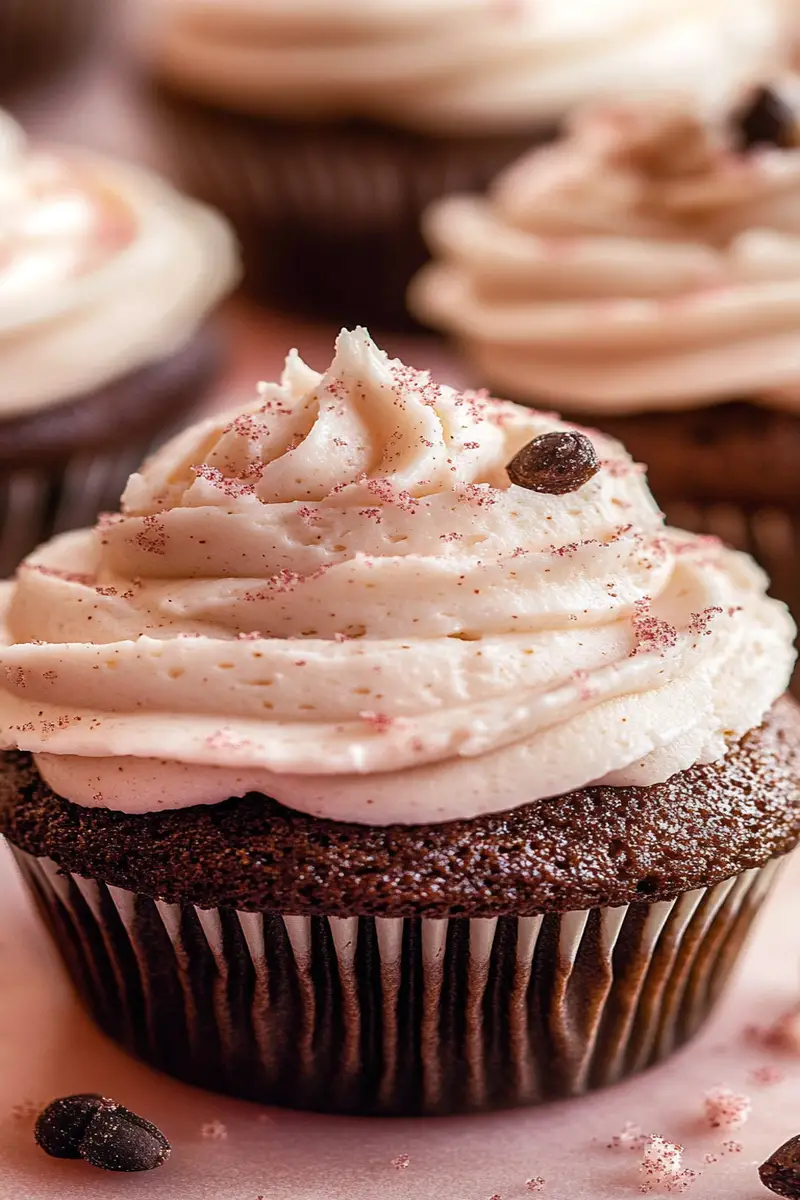
Tips and tricks
To achieve perfect buttercream icing for cupcakes, start by choosing high-quality unsalted butter. The quality of butter directly influences the flavor and texture of your icing. Look for fresh butter that has a creamy consistency without any off-flavors. This foundational ingredient will make all the difference in how delicious your final product tastes.
Consider using a stand mixer instead of a hand mixer when preparing your icing. A stand mixer provides more power and stability, allowing you to whip up fluffier buttercream with ease. The paddle attachment helps incorporate air effectively while keeping everything smooth and well-mixed without excessive effort on your part.
Temperature matters greatly when crafting this treat; keep an eye on it! Aim for a comfortable room temperature environment while mixing because extreme temperatures can affect the consistency of your icing. If it’s too warm, your buttercream may become runny; too cold could lead to clumping.
When coloring your buttercream, opt for gel food coloring instead of liquid versions. Gel colors offer more vibrant shades with less liquid interference in the texture of your icing. Start by adding small amounts gradually until you reach the desired hue while maintaining that perfect consistency.
Don’t forget about piping techniques! Learning basic piping skills can take your cupcakes from ordinary to extraordinary quickly. Invest time in practicing various piping tips like star or round tips; different designs can elevate even simple cupcakes into stunning creations worthy of any occasion.
Suggestions for Buttercream Icing for Cupcakes
If you’re looking for variations in flavors for your buttercream icing for cupcakes, consider incorporating different extracts beyond vanilla—try almond or lemon extract for unique twists that can completely change the profile of standard frosting recipes while remaining easy to execute.
Texture is equally important; try adding a pinch of salt to balance sweetness effectively without overpowering flavors present in the buttercream itself. This small addition enhances overall taste remarkably well—just be careful not to go overboard!
For those interested in healthier options, substitute part of the confectioners’ sugar with alternatives like powdered erythritol or coconut sugar if appropriate dietary restrictions need consideration—this reduces overall calories while still providing satisfying sweetness levels.
Experiment with mix-ins as well! Chopped nuts or cookie crumbs folded into your frosting lend delightful textures alongside taste contrasts that keep things exciting every time you bake up a batch of cupcakes topped with homemade goodness!
Lastly, remember presentation matters! Consider decorative elements such as edible glitter or sprinkles once you’ve piped on your gorgeous buttercream. These additions give visual appeal that complements flavors beautifully—making each cupcake not just tasty but visually stunning!
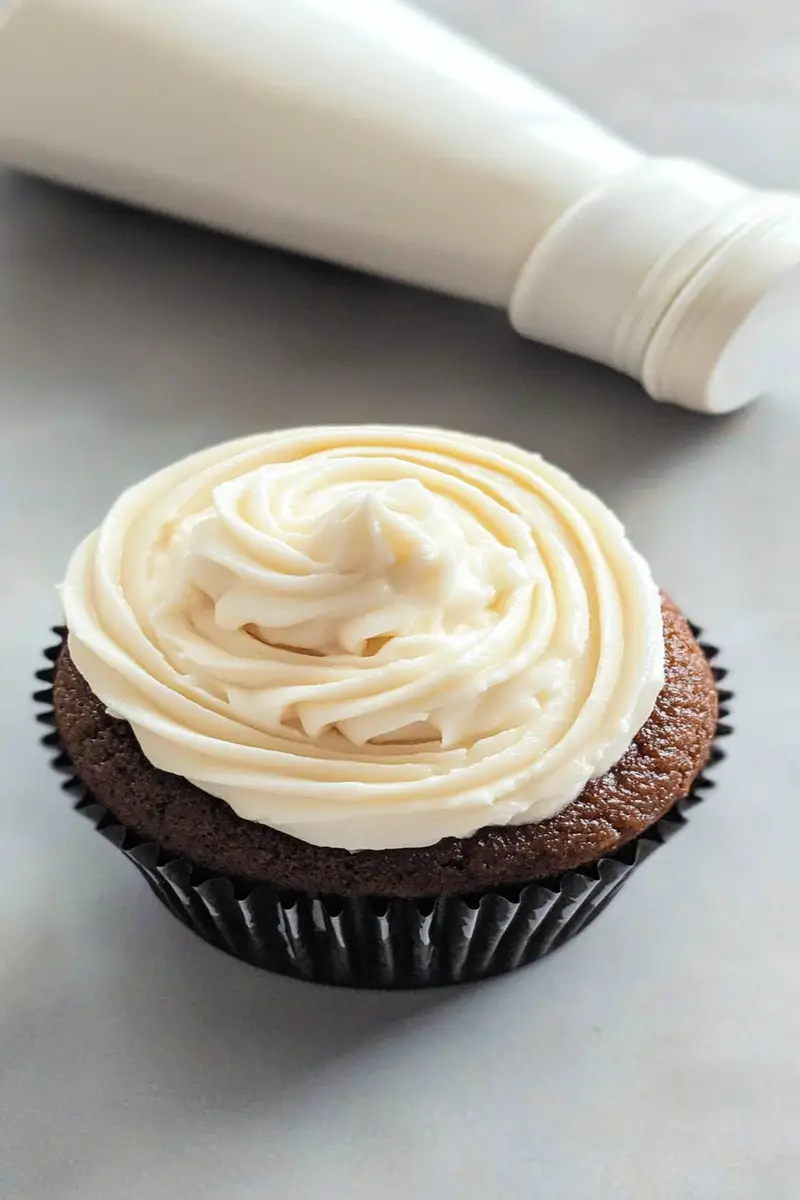
FAQs
What is Buttercream Icing for Cupcakes made from?
Buttercream icing for cupcakes typically consists of three main components: unsalted butter, confectioners’ sugar, and milk or cream. For basic recipes, you’ll want to start with softened unsalted butter beaten until creamy before gradually adding sifted confectioners’ sugar along with milk until achieving desired consistency and flavor balance based on personal preference regarding sweetness levels.
How do I store leftover Buttercream Icing?
To store leftover buttercream icing effectively after preparing it for cupcakes, place it into an airtight container before refrigerating it immediately if not used right away—keeping cold ensures freshness lasts longer! When ready to reuse later on baked treats; let sit out at room temperature until softened again before giving it a quick re-whip until fluffy once more—this way retains its original quality perfectly!
Can I freeze Buttercream Icing?
Freezing buttercream icing is entirely possible! Pack cooled frosting into an airtight container suitable freezer-safe bags storing flat if possible—and label clearly noting date made along with type inside—ensuring maximum freshness during storage! When ready again thaw overnight within fridge allowing gradual warming up process back towards room temp before whipping lightly prior using as desired atop freshly baked cupcakes!
What flavors can I add to Buttercream Icing?
Adding flavors enhances any batch of traditional vanilla-based buttercreams! Consider incorporating citrus zest such as lemon/lime/orange alongside extracts like almond/peppermint—or even cocoa powder/chocolate chips mixed through yielding delectable results tailored perfectly suited preferences while ensuring consistency remains intact throughout final product—just remember starting small adjusting quantities gradually until reaching ideal combination tailored palate preferences!
Why does my Buttercream Icing turn out grainy?
Grainy texture often stems from not sifting confectioners’ sugars beforehand—which allows larger granules preventing smooth integration necessary achieving silky-like finish expected within traditional frostings usually preferred topping off lovely homemade treats! Always sift dry ingredients thoroughly ahead time ensuring no lumps remain next mixing stage occurs resulting ultimately smoother mouthfeel enjoyed upon first bite!
Can I make Buttercream Icing ahead of time?
Absolutely! Preparing batches ahead saves valuable time during busy baking days—it’s recommended storing tightly sealed containers within refrigerator lasting several weeks without compromising quality/flavor profiles observed earlier upon initial preparation stages once whipped into perfection ready adorn those beautiful creations awaiting special occasions anytime soon thereafter whenever needed again soonest convenience arises!
Conclusion
Making delicious buttercream icing for cupcakes requires careful attention to detail but offers rewarding results when executed properly. Avoid common mistakes like using cold ingredients or overmixing, which can undermine texture quality significantly while enhancing overall experience enjoyed by anyone indulging treats adorned atop sweet delights crafted lovingly by hand through trial/error processes repeated often improving skills each step taken forward continuously learning throughout journey baking journey undertaken passionately forevermore! Remember tips shared help navigate challenges faced confidently ensuring success achieved consistently across every endeavor undertaken culinary world awaits discovering endless possibilities together enjoying scrumptious outcomes delightful moments shared friends/family alike creating memories cherished fondly forevermore!
Print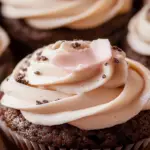
Buttercream Icing for Cupcakes
- Total Time: 10 minutes
- Yield: Enough for 12-18 cupcakes 1x
Description
This classic Buttercream Icing is rich, smooth, and perfect for decorating cupcakes or cakes. With just the right balance of sweetness and creaminess, it’s the ideal topping to complement any flavor of cupcake. You can easily customize it with different extracts or food coloring to match your occasion!
Ingredients
- 1 cup unsalted butter, softened
- 4 cups powdered sugar, sifted
- 2 tbsp heavy cream (or milk)
- 1 tsp vanilla extract
- Pinch of salt
Instructions
- In a large bowl, beat the softened butter on medium speed until smooth and creamy, about 2-3 minutes.
- Gradually add the sifted powdered sugar, one cup at a time, while continuing to beat on low speed to prevent a sugar cloud.
- Add the heavy cream, vanilla extract, and a pinch of salt, and continue to beat on medium speed for another 3-5 minutes, or until the frosting is light, fluffy, and smooth.
- If the frosting is too thick, add more heavy cream, a tablespoon at a time, until you reach the desired consistency. If it’s too thin, add a little more powdered sugar.
- Once the buttercream is fluffy and smooth, it’s ready to pipe onto your cupcakes.
Notes
- You can color the buttercream with food coloring or add flavorings like almond extract or citrus zest for a different twist.
- If you’re not using the icing immediately, store it in an airtight container at room temperature for up to 2 days or refrigerate it for up to a week. Re-whip it before use.
- Prep Time: 10 minutes

